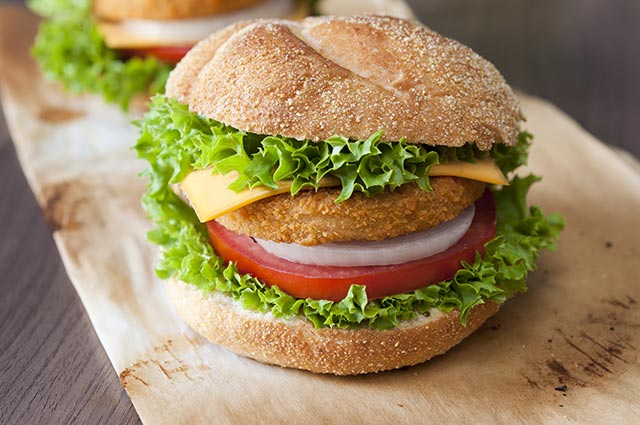


Going gluten-free can improve your health. A gluten-free diet involves excluding foods that contain protein including wheat, rye, and barley.
The special needs world comes with a plethora of acronyms and abbreviations. From diagnosis (ASD, ADHD, PDD-NOS…) to education plans (IEP, LRE, BIP, ESY) to dietary interventions (GFCF, LOD, SCD), parents can easily become tangled in a chain of letters. Perhaps the most common abbreviation that has made its way into the mainstream is GF, or gluten-free. Gluten is the general name for the protein found in certain grains.

A mere decade ago, looking for gluten-free items in a traditional grocery store was a fruitless search. Now, entire aisles are dedicated to GF foods, and major chain restaurants offer gluten-free items or even entire GF menus. There are cookbooks by the dozens that focus on GF meal prep. (A personal favorite: Cooking for Isaiah by Silvana Nardone). Even bakeries across the country offer treat made with alternative grains.
So what’s changed, and why all the buzz about gluten free? What started as a fad may have evolved into a norm as more people tried ditching glutenous foods and found they felt better and in good health. Also, it seems that parents of children with autism who were willing to try just about anything to alleviate their child’s symptoms turned to GF (and sometimes CF, or casein-free) diets.
As their children looked healthier, slept better, and experienced less abdominal discomfort, the word spread about going gluten-free. But does this really work, or is a GF lifestyle just a bunch of hoo-ha?

Notice the reference to GF as a lifestyle and not just a diet. That’s because it is used in thousands of products including toothpaste, mouthwash, lip balms, soaps, lotions, some play dough, medications, and more. It might not be essential to go completely GF in the home, but, if a person is just that sensitive, or tests positive for celiac disease, then it makes sense to identify all possible exposures.
How do you identify gluten if it’s so pervasive in food and personal care products? Grains that contain gluten include wheat, barley, rye, semolina, bulgar, spelt, durum, triticale, couscous, kamut, and farro. Corn, millet, rice, and sorghum do not contain gluten.
Here’s where it gets confusing: buckwheat does not contain gluten because it is actually a seed. Be cautious about buckwheat soba noodles, however, because some brands blend the buckwheat with wheat for texture. Wheatgrass, which is grown from wheat berries, is not glutenous if the kernal is discarded; the sprouted grass does not have gluten. And oats ? They are gluten-free but are widely processed alongside wheat and other grains. To be sure, look for certified gluten free oats.

It is crucial to distinguish a true food allergy from an intolerance from a sensitivity. Dr. Michael R. Lyon, M.D. explains this in his book Is Your Child’s Brain Starving?. “An allergy is defined in medical texts as a very specific and well-defined type of adverse reaction of the immune system to a specific molecule, usually a protein.”
Allergy and hypersensitivity go hand in hand because the effect is immediate and includes well-defined symptoms such as hives or difficulty breathing. Intolerances are generally less severe and result in symptoms such as headaches, bloating, or irritability. These would be classified as non-immunological responses. Eating food on a regular basis that triggers intolerance could promote a true food allergy.

Is there a test that can determine if your child has intolerances and/or allergies to this or other foods? Yes. As Judy Converse, MPH, RD, LD, states in her book, Special Needs Kids Eat Right, “The choice is individually prioritized and is typically decided based on financial limitations, health care coverage, and issues at hand for the child.” But testing is not a requirement for going gluten-free.
By keeping track of symptoms and food intake, monitoring growth and sleep patterns, and assessing (as a parent) cognitive ability and behavioral changes you can begin dietary changes without expensive lab fees. And, don’t be afraid to inspect the diaper or toilet after bowel movements! Poop is a great indicator of whether a child needs dietary tweaking.
Going gluten-free can drastically improve some symptoms. If a parent tries removing gluten, then know that there should be a solid three-month 100% commitment to this process. It takes about that long to have gluten molecules clear out of the body and begin to see differences in symptoms, behavior, cognitive functioning…and poop.

Other important tips:
Parents should read labels, restock their pantry and fridge as they gear up to give gluten-free a try, record food intake, and symptoms, and then relax and watch if, over time, this works for the child. If not, there is not much lost in those three months! If so, go forth in your gluten-free world! It’s really up to you to decide if GF living is beneficial for health or “bull.”
Check out more blog posts on our Health Category or Food Category section.
Just enter your email address below and you’ll get an email every time we publish a new post!
Categories :
Tags :
Keri is a special needs parent and a veteran high school English and journalism teacher turned writer. She enjoys reading, hiking, gardening, cooking, traveling, wine tasting, and practicing yoga. Both she and her son love to create art. She has a passion for educating people on all things autism. Visit her blog at https://kerimehome.com.
View All PostsNotifications